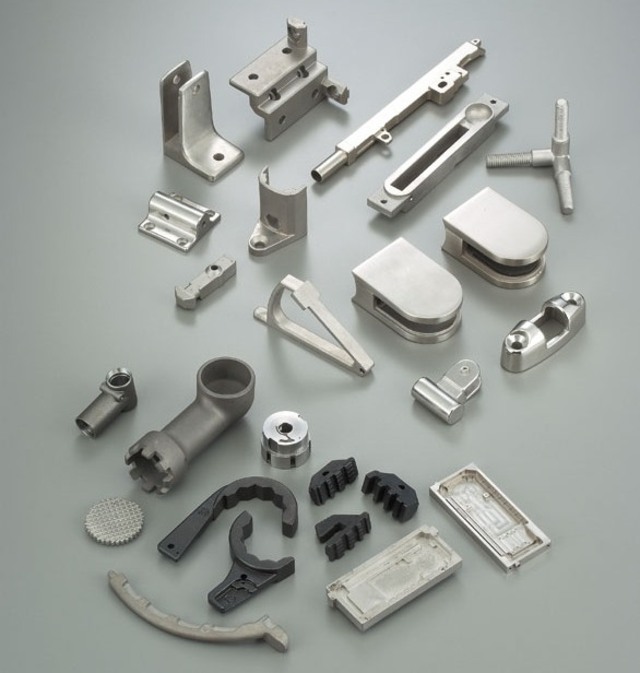MIM parts mean those metal parts made by metal injection molding process. MIM is just another metalworking method, like forging and casting. Compared to those well-established metalworking methods, MIM usually performs better when producing small size, complex shapes metal components in large quantities. MIM parts make use of wide ranges of materials such as varieties of stainless steel, low alloy steel, iron-based, titanium, etc. Recently MIM has acquired increasing significance in various fields of Industry, Automotive, Electronics, Medical, Tools, Firearms and others.
Metal injection molding (MIM) is a metalworking process in which finely-powdered metal is mixed with binder material to create a “feedstock” that is then shaped and solidified using injection molding. The molding process allows high volume, complex parts to be shaped in a single step. After molding, the part undergoes conditioning operations to remove the binder (debinding) and densify the powders. Finished products are small components used in many industries and applications.
A steel MIM part can be treated like any other steel part, it can be welded, soldered, blued, hardened, tempered, polished, filed, and ground – any operation you could perform on a forged part you can perform on a MIM part post-manufacturing.
The advantages of a MIM part do not generally include raw cost, the material is expensive, and the molds are horrendously expensive. The benefits come in the area of post-fabrication. The MIM part, as noted, can be heat treated – the benefit is that they don’t need to be, as the hardness of the part can be engineered in when the part is made. The parts come out ready to use; no additional surface finishing is generally needed. Finally, the parts can be made in shapes that would be extremely expensive or nearly impossible to economically machine.
Right now there are plenty of excellent MIM parts in current use in various fields.
